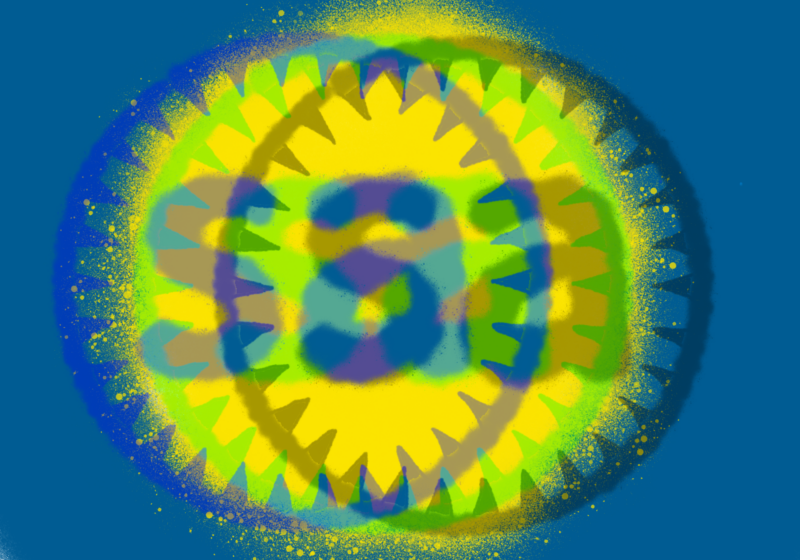When people think of the UR residence halls, two images come to mind: One is of cinder block-walled rooms hidden behind brutalist edifices, and the other is of air-conditioned suites bathed in natural light. It may come as a surprise to many that those austere residences, too, used to be elegant, plush buildings. Yes, the humble Anderson and Wilder (commonly referred to as “the Towers”), and Susan B. Anthony dormitories were once a testament to the University’s commitment to comfortable housing.
Susan B. Anthony:
Susan B. Anthony Hall was constructed in 1955 to address housing needs that arose when women moved onto the then-all-male River Campus. The hall’s name pays tribute to Susan B. Anthony’s legacy in advocating for women’s rights.
Susan B. Anthony Hall was equipped with amenities that were impressive for its era. The design emphasized comfort and community, with shared spaces encouraging social interaction — a novel feature for residence halls of the time, as well as dining facilities on the ground floor. The interiors featured a clean, mid-century aesthetic, with spacious lounges, large windows, and communal areas that blended form with function.
The Susan B. Anthony Residence Hall became a first-year-only dorm later in its history, likely as part of the University’s effort to create a cohesive first-year student community. This shift in function marked the beginning of the decline in its reputation as a premier residence. Given the obvious issues associated with first-year-only dorms (high turnover, wear and tear, tomfoolery), the aesthetics and facilities of Susan B. Anthony Hall received less resources and care.
As the years went on, four wings of the dorm proved inferior to the tight-knit buildings of the freshman quad. An unflattering aerial view of Susan B. Anthony gives it the appearance of a penitentiary, and the dated linoleum flooring and torn furniture don’t challenge this image. Especially when compared to its neighbor, Genesee, it makes sense that Sue B. would fall from grace. In the end, the dorm became the utilitarian mass of bricks that the University had tried so hard to avoid at the time of its construction.
Towers:
The Towers complex, also known as Jackson Court, was dedicated in 1963 during the University’s Homecoming celebrations. This complex includes two 10-story dormitories and, at one point, a dining hall, which later became the Sage Art Center. The buildings of Jackson Court were named in honor of the University’s founding figures: Martin B. Anderson (the first University president), John N. Wilder (the first chairman of the Board of Trustees), and William N. Sage (the first secretary-treasurer of the Board).
At the time of its construction, the Towers were similarly considered luxury housing, featuring co-ed living arrangements, suites with shared lounges and kitchenettes, and private bathrooms — a departure from the traditional dormitory style with long corridors and communal bathrooms. These dorms were so desirable that some professors opted to live on Jackson Court with their families instead of in off-campus residences.
Basic wear and tear from decades of continuous use has taken a toll on the Towers. Carpets, furniture, and fixtures that were once stylish and comfortable have now become outdated and worn. Aging infrastructure and furnishings give the dorms a tired and shabby look that contrasts sharply with newer residence halls on campus — namely O’Brien Hall, which serves as the third addition to Jackson Court.
In addition to dated aesthetics, practical issues such as unreliable heating or cooling, outdated electrical systems, and limited amenities add to the sense of decline. The furnishings that remain are often mismatched, basic, and lack the modern comforts offered by newer housing. Many students now view the Towers as poorly furnished and dreary, with an atmosphere that feels neglected rather than welcoming.
The histories of Susan B. Anthony Hall and the Towers reveal a stark contrast between the University’s original vision for student housing and the current state of these once-prime residences. If nothing else, this shift should underscore the need for continued investment in student housing. The legacy of Susan B. Anthony Hall and the Towers serves as a reminder that quality housing is not merely an architectural matter; it is a commitment to fostering a positive student experience. Revitalizing these historic dorms could honor that commitment, providing students with the kind of environment that was once celebrated and setting a standard of care and comfort for future generations.






